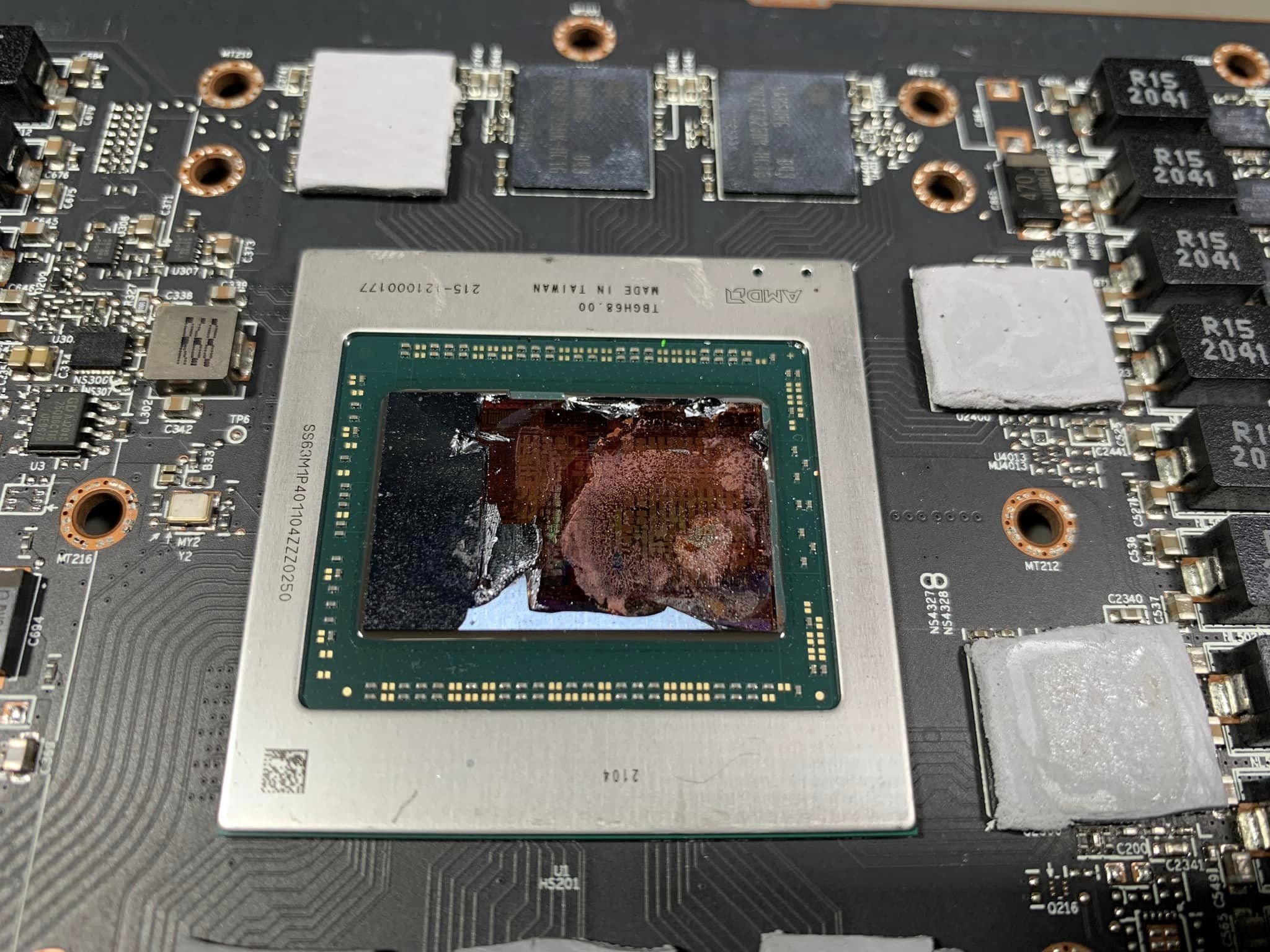It all started on January 10th, when YouTuber KrisFix-Germany, who works as a graphics card service technician in Germany, pointed out that over the course of three weeks, dozens of Radeon RX 6800 XT / 6900 XTs had landed on his desk with the same symptoms. The cards are broken, the paths through the GPU are shorted, and there is no visible damage to the PCB. Subsequently, some users alerted him that they saw something like a crack in the GPU in the video. The service technician subsequently confirmed it, the core (silicon) is cracked. He also pointed out that users claimed to use the card in different ways, but all said they were using the same driver.
Since then, articles have appeared on various websites warning users about the 22.11.2 WHQL driver.
Drivers can cause negative effects such as instability, reduced performance, frame rate stability, artifacts, overheating, or even increased noise from the cooler, but it is basically impossible (at least so far such a case has not been recorded) to cause mechanical damage to silicon in this form. The very absurdity of connecting drivers and broken GPUs is already pointed out by the fact that dozens of cards damaged in this way are reported from Germany alone. If the controller really broke the chips, there would be hundreds of similar ones from the US and the rest of Europe and Asia for dozens of German cases.
A cracked core is almost always caused by handling the card outside of the manufacturer’s specifications. Considering the fact that the cards appeared three weeks apart, in one country, and in two specific series, the simplest explanation would be a heavy impact during shipping. For example, a pallet that went off the ramp while being unloaded from an airplane, or fell while being unloaded from a truck. The PCB is flexible, the cooler to some extent as well, the GPU case is also flexible, so there is no visible damage to them, but the silicon core is not flexible, it will crack. Thanks to the original packaging, the card is not visibly damaged, the packaging may not be damaged either, but the core will not survive the overload.
However, there is one problem with this theory – according to the technician, the users were supposed to use the cards. The possibility that they bought a card that was destroyed in transport, did not work after mounting and a complaint followed, is not very likely.
Even so, impact from a packaged (or otherwise protected) card still seems like a pretty plausible explanation for how a silicon core can crack without showing any other visible damage. Some users speculate about the connection to mining. In such a case, perhaps only the theory that the cards (wrapped) fell to a miner, e.g. during transport, would make sense. Because he is aware that by claiming all of them at once he would raise suspicion, he claimed the cards under the identities of different end-users one after the other over a period of several weeks.
While such a hypothesis is mind-boggling, it presents a scenario that explains everything from what caused the cards to be damaged to why the problem appeared in one country and one period. In the end, it’s still far more likely that a driver used by hundreds of thousands of users around the world broke the GPU silicon of a few dozen users in Germany.


